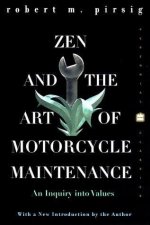That's interesting, it really must be a perception thing, I see the frequency domain as more "real" than the time domain. Look at an oscilloscope trace then a spectrum analyser, which is more "real" to you?
If you read what DF96 has posted, he's not talking about looking at equipment but about how we experience the world in our everyday contact with it - things are experienced as happening over time & that's why he says time is considered a more important aspect rather than frequency.
if you read back his posts you will pick up that he is saying is the exact opposite of what you are now saying
Last edited:
You can't separate them, I was responding to what I thought you meant about frequency, I'm probably wrong in my assumption about what you meant?
...
And nothing whatsoever like what Merrill’s says or thinks to say
ToS
Thanks for that explanation.
In my defence, we all can't be experts in everything & I was using it in the commonly used vernacular & used it about audio as shorthand for over exaggerated detail usually associated with digital audio but resulting from distortion.
But I already posted that explanation so no need to again attack me when I have already explained what I meant. It would have been sufficient to have presented your knowledge on Technicolor & leave it at that.
Please desist in your constant nit-picking criticism of everything I say. Ask yourself - did you really need to add that last line in your post?
Last edited:
Hi Richard,
I think Scott has nailed it with his comment
"since a difference is often perceived as an improvement, it would be more useful to do the comparison again"
I all the years I have been working with audiophiles, this is probably the most significant error made and hence the endless quest for improvement by most audiophiles. The lack of an established base line and the lack of repetitive comparisons to establish the improvement or lack of. Most audiophiles totally ignore this fact ad end up chasing their tails.
A sad state of affairs but governed by human nature.
Jam
Maybe for the general public at large might be true. Might not be true.
It is similar problem as loudness.... demo two same speakers and the louder one sounds "better".
These are purely "like" decisions or contests. Not which one is more accurate. I have established a base line and described how to know which is more accurate before. How you can tell which is the most accurate of two.
THx-RNMarsh
Last edited:
Zen and the Art of Motorcycle Maintenance
It is all in this book that Nelson Pass introduced to me 41 years ago (I must be getting old) a precursor to building the Pass A-40 amplifier.
A great read.......need to read it again soon.
Jam
It is all in this book that Nelson Pass introduced to me 41 years ago (I must be getting old) a precursor to building the Pass A-40 amplifier.
A great read.......need to read it again soon.
Jam
Attachments
Last edited:
It is all in this book that Nelson Pass introduced me to 41 years ago (I must be getting old). A great read.......need to read it again soon.
Jam
Have you read Jonathan Livingston Seagull?
It is all in this book that Nelson Pass introduced to me 41 years ago (I must be getting old)
a precursor to building the Pass A-40 amplifier. A great read.......need to read it again soon. Jam
I have to break it to you Jam - we are old fart audiophiles.
"The test of the machine is the satisfaction it gives you.
There isn't any other test. If the machine produces tranquility
it's right. If it disturbs you it's wrong until either the machine
or your mind is changed." - Robert M Pirsig.

There's a great deal of harmonic resonance in a fart when you hit the right note 😀I have to break it to you Jam - we are old fart audiophiles.
Indeed, the end result of the art should do more than produce the right notes in the right place"The test of the machine is the satisfaction it gives you.
There isn't any other test. If the machine produces tranquility
it's right. If it disturbs you it's wrong until either the machine
or your mind is changed." - Robert M Pirsig.

 come on guys, this is the lounge, you can blah blah away to your heart's content, but please stay civil, do not waste your time posting what will be deleted anyway....personal attacks will be deleted...
come on guys, this is the lounge, you can blah blah away to your heart's content, but please stay civil, do not waste your time posting what will be deleted anyway....personal attacks will be deleted...RIP Jack Renner...
Although the analog purists may have expressed disdain for his popularizing the Soundstream machine as well as his early adoption of the CD format, I give jack a lot of credit for placing emphasis on the sound quality of Telerc recordings. People forget he also was an early direct-to disk advocate as well, releasing a lot of fantastic vinyl.
He was not easy to do work for and we spent a lot of time making sure his recordings were produced as best as we could. I respected him for his goal of high fidelity and he and Telarc made a lot of great recordings.
Another significant figure in our field passes...

Howie

Although the analog purists may have expressed disdain for his popularizing the Soundstream machine as well as his early adoption of the CD format, I give jack a lot of credit for placing emphasis on the sound quality of Telerc recordings. People forget he also was an early direct-to disk advocate as well, releasing a lot of fantastic vinyl.
He was not easy to do work for and we spent a lot of time making sure his recordings were produced as best as we could. I respected him for his goal of high fidelity and he and Telarc made a lot of great recordings.
Another significant figure in our field passes...


Howie
Indeed, the end result of the art should do more than produce the right notes in the right place
“On a cycle the frame is gone. You’re in complete contact with it all. You’re in the scene,not just watching it anymore, and the sense of presence is overwhelming”. - Robert M. Pirsig
This comes close to explaining ‘it’ 🙂
I too, like 'Zen and the Art of Motorcycle Maintenance'. Have owned it for decades and I re-read it just a few years ago. It is what Nelson and I are trying for in our audio designs, and I hope the same is true for you, Jam.
Thanks Alan.Demian's original files are still online here Index of /ProAudio/Demian_Tri _Band _files
Last edited:
Have you actually read Helmholz? Do you know what the background is of his resonator and where he used it for? Do you have any idea about how the inner ear works and what the composition is of the signals it feeds into the auditory nerve?Sorry, but no. It takes place (constantly) in both domains.
Ohm was allegedly the inventor of the theory (pure frequency analysis), but already Helmholtz knew (reportedly, I'm not that old) that the modelling of the human auditory apparatus as pure frequency analzer is not correct.
In the current model obviously the time based analysis is incorporated, as, for example, neither localization nor auditory scene analysis can be explained based solely on frequency domain analysis.
But more important, a couple of weeks ago these mechanisms were discussed at length wrt to high frequency hearing loss and the related perception of "bass attacks" . You know, all the talk about temporal fine structure and spectral decomposition, mhm?
So it would be great if, at least, the members participating already back then use their memory and refrain from the fruitless "lack of knowledge allegation" discussion style.
My knowledge in this field does not come from discussions in this thread. If yours is, I suggest you dig into some more serious literature.
Not wrong at all. If you don't want to learn, I don't want to teach.<snip> Simplistic & wrong, I'm afraid - it's far more complex than this & it's not the inner ear that does this analysis
Sorry, so wrong it just doesn't even compute but I think your opening words are ironic "Thank you for displaying the real extent of your knowledge."
Just one last remark. Your auditory nerve (and its branches) are tonotopically organized, all the way up to Wernicke's area. Each nerve fiber is selectively responsive to a specific frequency, with well researched, assymetrical filter slopes. And timing information is coded, by each pulse train in these nerve fibers commencing on zero crossings of the sine wave component they are most sensitive to. It is functionally an FFT with phase unwrapping, distributed phase sensitive incident driven windowing and skewed bins.
Yes, you are correct - the auditory nerve consist of something like 50,000 nerve fibres - thanks for that - it's good to learn something new. I agree on the asymmetric filter slopes.Not wrong at all. If you don't want to learn, I don't want to teach.
Just one last remark. Your auditory nerve (and its branches) are tonotopically organized, all the way up to Wernicke's area. Each nerve fiber is selectively responsive to a specific frequency, with well researched, assymetrical filter slopes. And timing information is coded, by each pulse train in these nerve fibers commencing on zero crossings of the sine wave component they are most sensitive to. It is functionally an FFT with phase unwrapping, distributed phase sensitive incident driven windowing and skewed bins.
You may be correct that it is functionally equivalent to an FFT with all the qualifiers you mention. Skewed bins I get. How does "phase unwrapping & distributed phase sensitive incident driven windowing" work? - all coming from the timing differences in the nerve impulses within each nerve fiber?
Thanks for your reply
Let's presume Bruno has made some progress in correlating measurements with perception, how do we wring it out of him?
No need, he already told us.... 🙂
- Status
- Not open for further replies.
- Home
- Member Areas
- The Lounge
- John Curl's Blowtorch preamplifier part III


